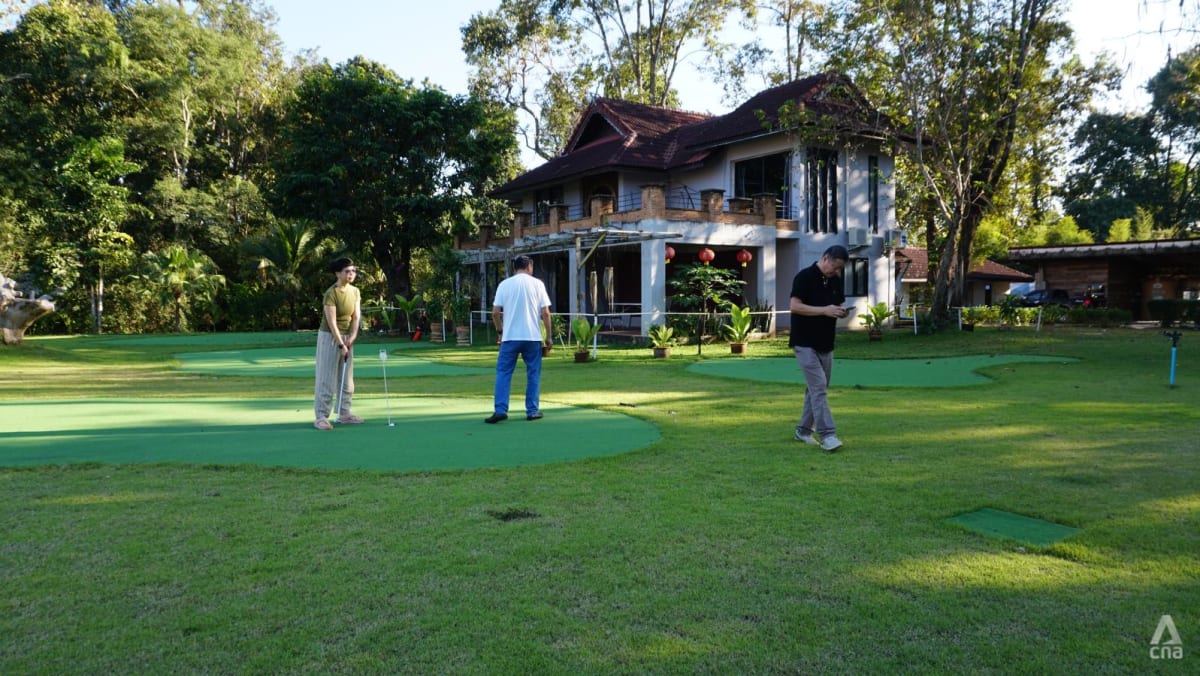By Duarte Mendonca, Kocha Olarn and Sophie Jeong | CNN
One person has died and at least 71 others were injured on board a Singapore Airlines plane that encountered severe turbulence on a flight from London to Singapore.
The Boeing 777-300ER plane diverted to Bangkok, according to a post on the Singapore Airlines Facebook page. It said 211 passengers and 18 crew were on board.
The company said initially in a post that 30 passengers had been hurt in the mid-air disruption and were being treated in hospitals, while other travelers were receiving outpatient care at the airport.
The one person who died was a 73-year-old British man, General Manager of Bangkok’s Suvarnabhumi International Airport Kittipong Kittikachorn said on Tuesday.
The flight landed in the Thai capital at 3:45 p.m. local time (4:45 a.m. ET) Tuesday.
Kittikachorn, who inspected the aircraft, told CNN he was informed of the emergency landing 10 minutes before it touched down. He also said that several passengers had sustained broken arms but that the majority of injuries were cuts and bruises.
Some injured passengers were sent to the nearby Samitivej Srinakarin Hospital, Kittikachorn said, adding that almost 200 travelers were waiting to take onwards flight to their destinations.
The hospital said in an update that at least 71 people had been injured, including citizens from Malaysia, the United Kingdom, New Zealand, Spain, the United States and Ireland. It also said six people are severely injured. Earlier, Kittikachorn had said seven people were critically injured.
The aviation tracking site FlightRadar24 says, based on its data, that the turbulence on Singapore Airlines flight SQ321 occurred over Myanmar at approximately 7:49 a.m. UTC (3:49 a.m. ET).
This lines up with a statement from the airline stating that the plane, “encountered sudden extreme turbulence over the Irrawaddy Basin [a river in Myanmar] at 37,000 feet, about 10 hours after departure.”
FlightRadar24 said in a blog post that, according to its data, at that time, ”the flight encountered a rapid change in vertical rate, consistent with a sudden turbulence event.”
The data show the flight changing course about 14 minutes later. The airline says, “The pilot declared a medical emergency and diverted the aircraft to Bangkok.”
The FlightRadar24 data show the flight, which was cruising at 37,000 feet, suddenly dipping then rapidly climbing a few hundred feet before dipping and climbing again and then finally settling back at its cruising altitude. The entire disruption took about 90 seconds, according to the data, but resulted in dozens of injuries, including a fatality.
Singapore President Tharman Shanmugaratnam issued a statement on his social media accounts, expressing “condolences to the family and loved ones of the deceased.”
“We do not have the details of those affected, but know that the government ministries and agencies, as well as SIA, are doing their utmost to support all those affected and working with the authorities in Bangkok, where the plane had been diverted to,” Shanmugaratnam said.
Singapore’s Minister for Transport Chee Hong Tat said he was “deeply saddened to learn about the incident,” in a statement posted to his social media.
“Ministry of Transport, Singapore, Singapore Ministry of Foreign Affairs, Civil Aviation Authority of Singapore and Changi Airport officials as well as SIA [Singapore Airlines] staff are providing support to the affected passengers and their families,” he said.
Singapore’s Ministry of Transport said in a statement that it was investigating the situation involving SQ321 and its Transport Safety Investigation Bureau was in touch with their Thai counterparts.
Turbulence occurs when a plane flies through clashing bodies of air moving at widely different speeds.
With light and moderate turbulence passengers might feel a strain against their seatbelt, and unsecured items could move around the cabin.
But in severe cases turbulence can throw passengers around the cabin, causing severe injuries and occasionally death.
In March 2023, violent movements on a private jet resulted in the death of a former White House official, though an investigation later found that weather was not involved in that incident. That incident came just days after seven people were transported to hospitals after a separate commercial flight hit significant turbulence.
In July 2023, seven people were injured on a Hawaiian Airlines flight to Sydney, Australia, when the plane was buffeted by severe turbulence, and 36 people were injured on a Hawaiian Airlines flight from Arizona to Honolulu in December 2022, with 20 people taken to emergency rooms.
A September 2022 study predicts that clear-air turbulence will increase significantly around the globe by the period 2050-2080, in particular along the busiest flight routes, and the strongest type of turbulence will increase the most.
Singapore Airlines is often considered one of the world’s safest carriers.
Its only previous fatal accident was in October 2000 when flight SQ006 crashed when the Boeing 747-400 took off from a closed runway in Taiwan amid heavy rain, killing 83 on board.
Boeing has said it is in touch with the Singaporean carrier and is “ready to support them.” The manufacturer is deferring further questions to the airline and local authorities.
This story and headline have been updated with additional developments.
CORRECTION: An earlier version of this story incorrectly described a March 2023 incident involving a private jet. The National Transportation Safety Board later ruled weather had not been involved in the violent movements of that plane.
The-CNN-Wire™ & © 2024 Cable News Network, Inc., a Warner Bros. Discovery Company. All rights reserved.







